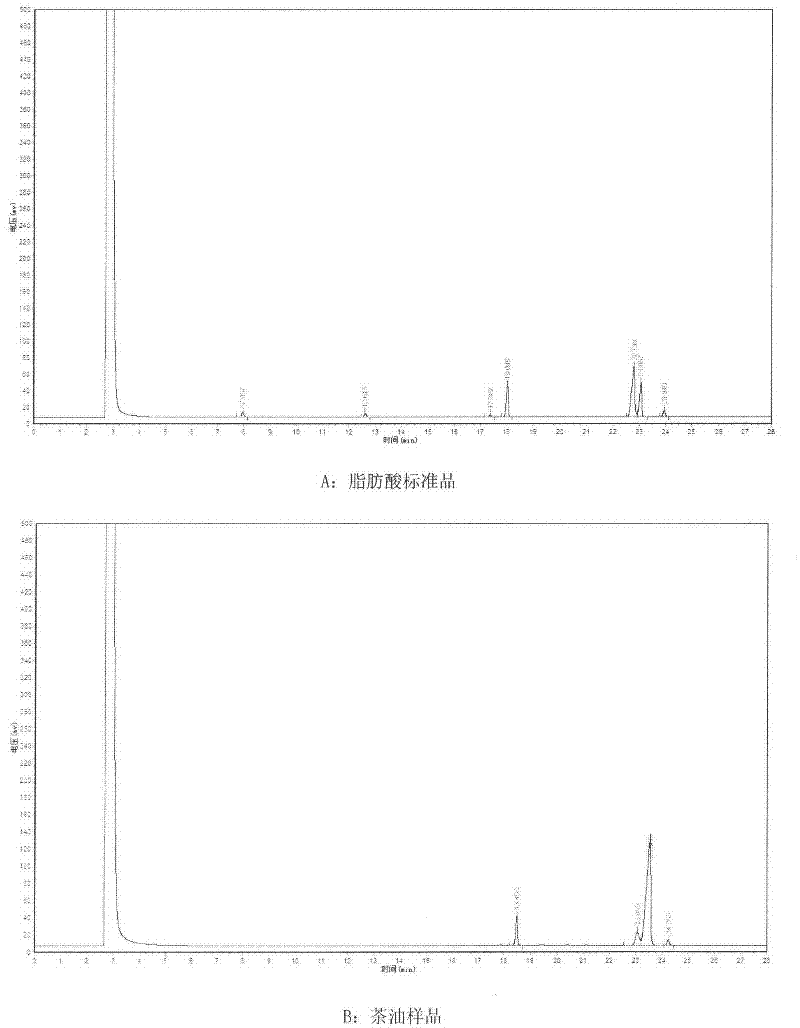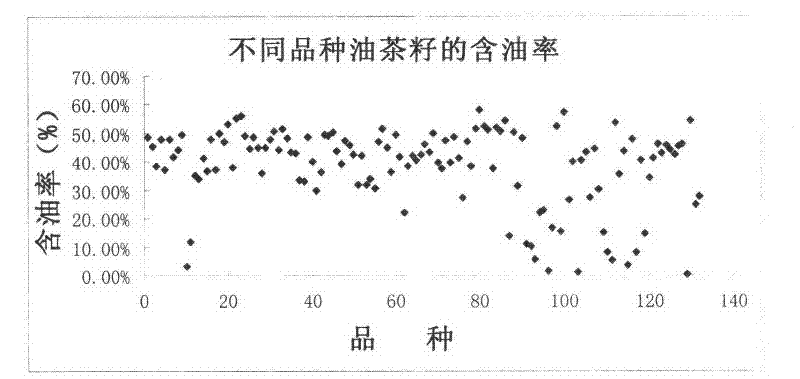Method for rapid determination of oil content in Camellia oleifera seeds by using near-infrared diffuse reflectance spectroscopy (NIRS)
A rapid determination of Camellia oleifera seed technology, applied in the field of edible vegetable oil quality analysis, to achieve the effect of good application value
- Summary
- Abstract
- Description
- Claims
- Application Information
AI Technical Summary
Problems solved by technology
Method used
Image
Examples
Embodiment 1
[0040] A method for quickly measuring the oil content of camellia oleifera seeds by near-infrared diffuse reflectance spectroscopy (NIRS), is characterized in that the near-infrared diffuse reflectance spectroscopy analysis technology measures the content of oil in different varieties of camellia oleifera seeds, and consists of the following steps:
[0041] The first step is the selection of high-quality Camellia oleifera varieties
[0042] Select high-quality varieties from 120-150 varieties of Camellia oleifera seeds, with oleic acid content of 65%-85%, preferably 70%-80%, linoleic acid content of 5%-20%, preferably 7%-12%, palmitic acid content 3%-15%, preferably 7%-11%, stearic acid content 1%-5%, preferably 1%-3%;
[0043] The second step is the basic data determination of camellia seed samples
[0044] The oil content of camellia oleifera seed oil was determined by Soxhlet extraction method, and the fatty acid content in camellia oil was analyzed by gas chromatography. ...
Embodiment 2
[0054] The determination of the oil content of different varieties of Camellia oleifera seeds in embodiment 2
[0055] Grind the dried Camellia oleifera seeds into powder (with seed husks, the water content of the sample is less than 10%), weigh a certain amount of Camellia oleifera seed powder, and record the weight m 0 . Put it into the filter paper tube, insert the absorbent cotton into the upper part, compress the sample, and put it into the extractor. Add 180mL of petroleum ether (60°C-90°C) into the extraction bottle, extract at 80°C for 6h, evaporate the extract to empty and concentrate the solvent to obtain camellia oil, weigh the oil in m 1 . Calculate the oil content w=m of the corresponding variety 1 / m 0 . The oil content of 130 varieties of camellia seeds are shown in Table 3 (samples No. 1 to No. 120 are from Jiangxi).
[0056] Camellia oleifera seed samples of different varieties in Yunnan, Jiangxi, Zhejiang and other places were selected in this embodimen...
Embodiment 3
[0057] The composition of fatty acid in the different kinds of camellia oils measured by gas chromatography in embodiment 3
[0058]The varieties selected in this example include Guangxi (Lingyun, Liuzhou Rongshui, Fangchengdongzhong, Baise, Fengshan, Rong'an, Tianyang, Nandan, common Camellia oleifera), white camellia oil, safflower camellia oil, Yunnan Funingyan A small amount of 129 samples (as shown in Table 3), including 1-120 samples from North Korea and Jiangxi, were dropped into a 10mL test tube, and 2mL of 0.5mol / L NaOH-CH 3 OH, shake well, put it in a 60°C water bath for methyl esterification for 30min, take it out and add 5mL of n-hexane, shake well, take out the supernatant after standing still, and carry out GC chromatographic analysis.
[0059] GC analysis conditions: chromatographic column SE-30; hydrogen flame ionization detector (FID); inlet temperature 280°C, detector temperature 280°C, column temperature 200°C, last 5min, and heat up at a rate of 5°C per min...
PUM
 Login to View More
Login to View More Abstract
Description
Claims
Application Information
 Login to View More
Login to View More - R&D
- Intellectual Property
- Life Sciences
- Materials
- Tech Scout
- Unparalleled Data Quality
- Higher Quality Content
- 60% Fewer Hallucinations
Browse by: Latest US Patents, China's latest patents, Technical Efficacy Thesaurus, Application Domain, Technology Topic, Popular Technical Reports.
© 2025 PatSnap. All rights reserved.Legal|Privacy policy|Modern Slavery Act Transparency Statement|Sitemap|About US| Contact US: help@patsnap.com



